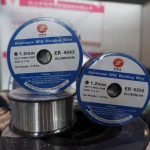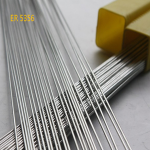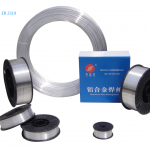Filler metals
As we our know that approximately 80 percent of the aluminum filler wire sold worldwide is either 4043 or 5356. So, most often one or the other will be appropriate for your application. Yes, you are correct in saying that 5356 is stronger. But your distributor is also correct in suggesting you can use either 5356 or 4043. For groove welds, it doesn’t really matter because the weak point of the weld will be in the heat-affected zone (HAZ) in the 6061 adjacent to the weld. Either filler provides a weld that is stronger than the HAZ, which is why you can use either one.
So what are the advantages of one filler metal over the other? Briefly, 4043 is easier to weld with and provides a better appearance. 5356 is stronger, which is not really important for groove welds.
Filler metals in 4043 and 5356
However, the picture changes a bit if you are assembling a structure using fillet or lap welds. While groove welds normally are loaded in tension and usually fail in the HAZ (as stated above), fillet welds are almost always loaded in shear and fail right in the middle of the weld. In this case, the difference in strength between 4043 and 5356 does matter. The minimum shear strength of 4043 usually is listed at 11 kilopounds per square inch (KSI), while the shear strength of 5356 is listed at 18 KSI. In the case of a structure assembled mainly from fillet welds, 5356 does have a strength advantage.
Sometimes 4043 is not appropriate at all. For instance, don’t use it to weld alloys high in magnesium, such as 5083, 5056, and 5454. The reason is that the high magnesium content of these alloys combined with 4043’s high silicon content produces a large amount of the compound Mg2Si in the weld, which can make it brittle. In fact, the only 5xxx alloy that should be welded with 4043 filler is 5052, which contains a very low amount of magnesium.
So which filler metal should you use? If it were me, I would use 4043 if I were making mostly groove welds. I would seriously consider 5356 if I were making mostly fillet welds.
Please note that all of the above is correct when we use the welded component in the as-welded condition. If you want to heat-treat after welding (not many people do), things change. We will discuss that situation next time.




